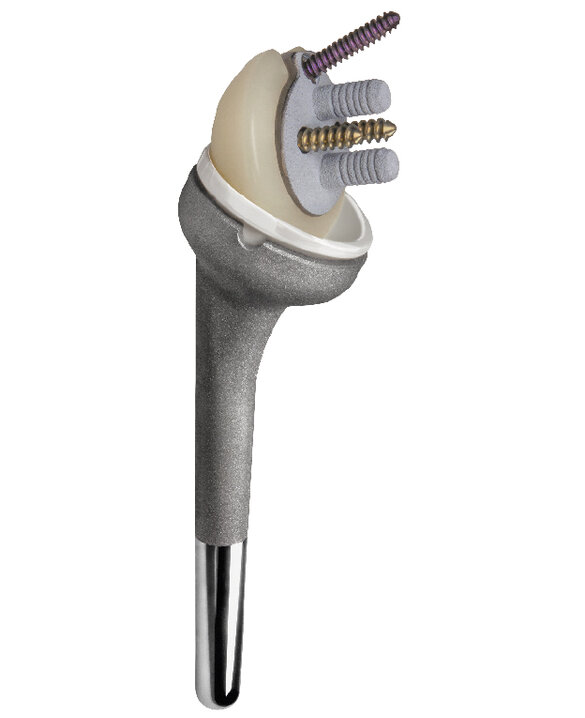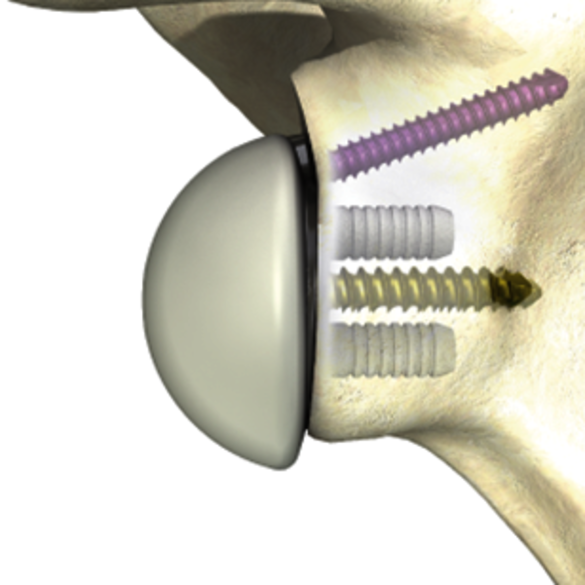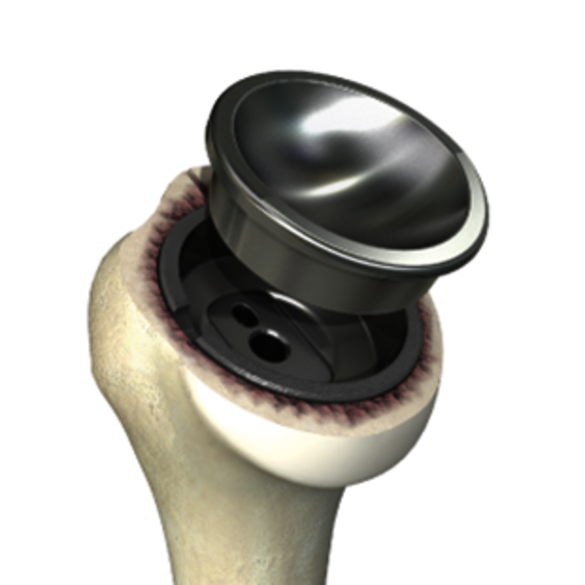Inverse prosthesis
This “reversed” prosthesis is used in cases of:
- extensive, irreparable rotator cuff ruptures with weakness and mobility restriction of the shoulder
- Rotator cuff defect arthropathy (longstanding damage in the tendons of the rotator cuff that lead to a special form of osteoarthritis)
- Endoprosthesis exchange operations (revision)
Because in these cases conventional joint replacement does not reliably achieve freedom from pain and the standard endoprosthesis does not improve the loss of strength and mobility, an inverse joint replacement is used.
With inverse joint replacement, the positions of ball and socket are reversed, i.e. the plastic ball is implanted in the shoulder blade and the metal or ceramic socket in the head of the upper arm bone. This makes it possible to raise the arm again by using the deltoid muscle even though the rotator cuff is defective.



